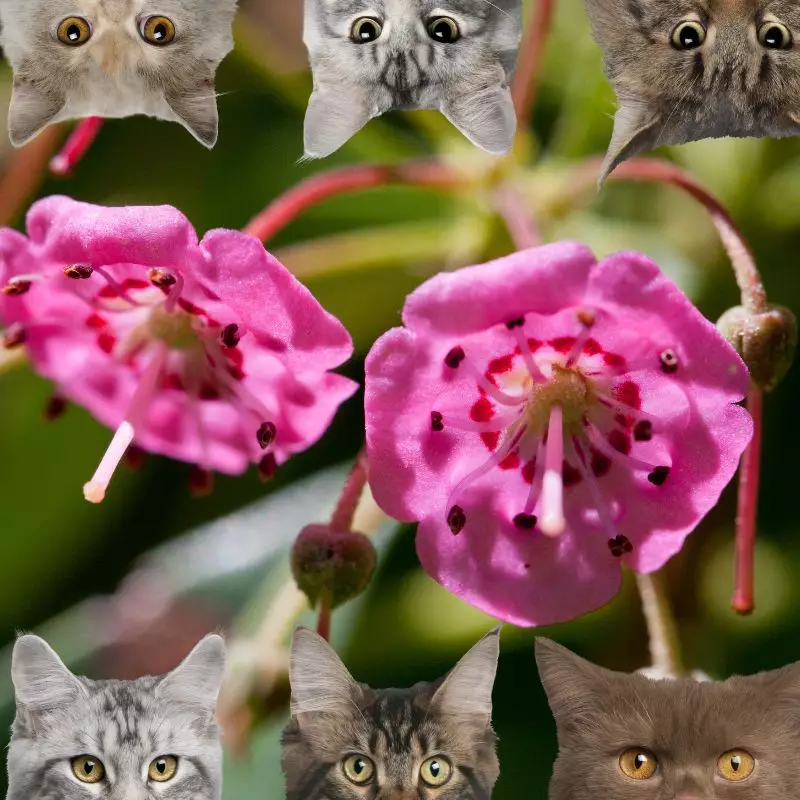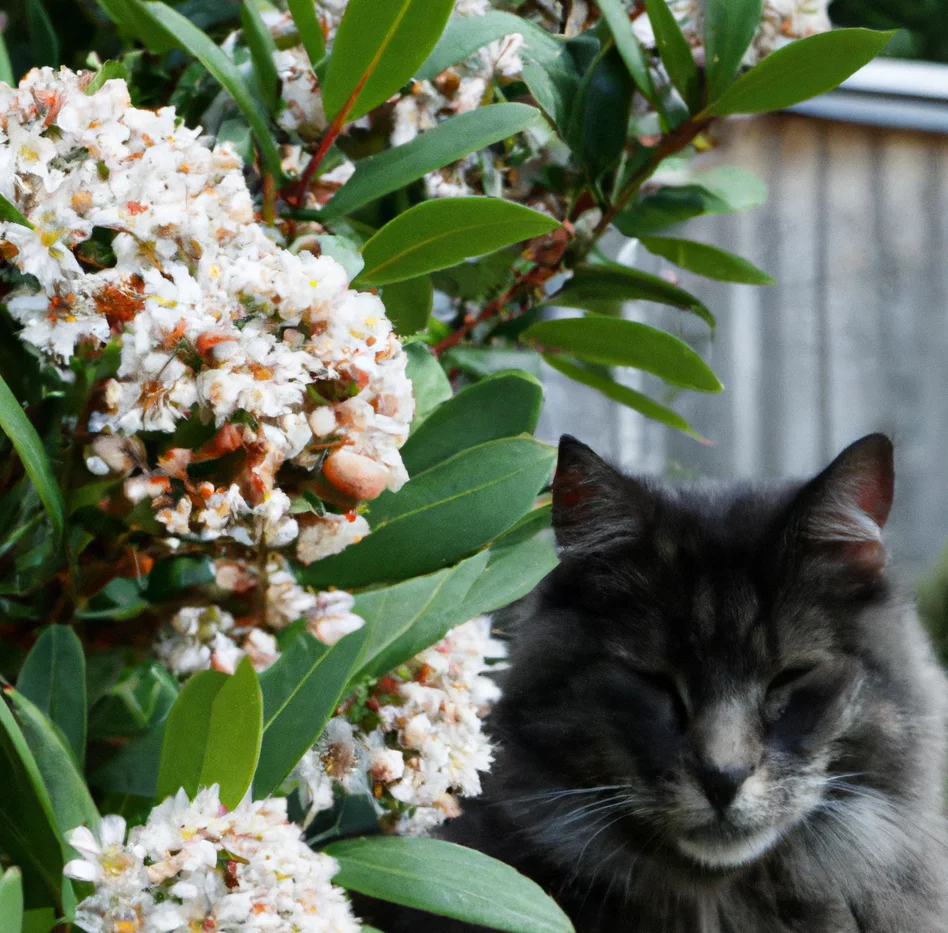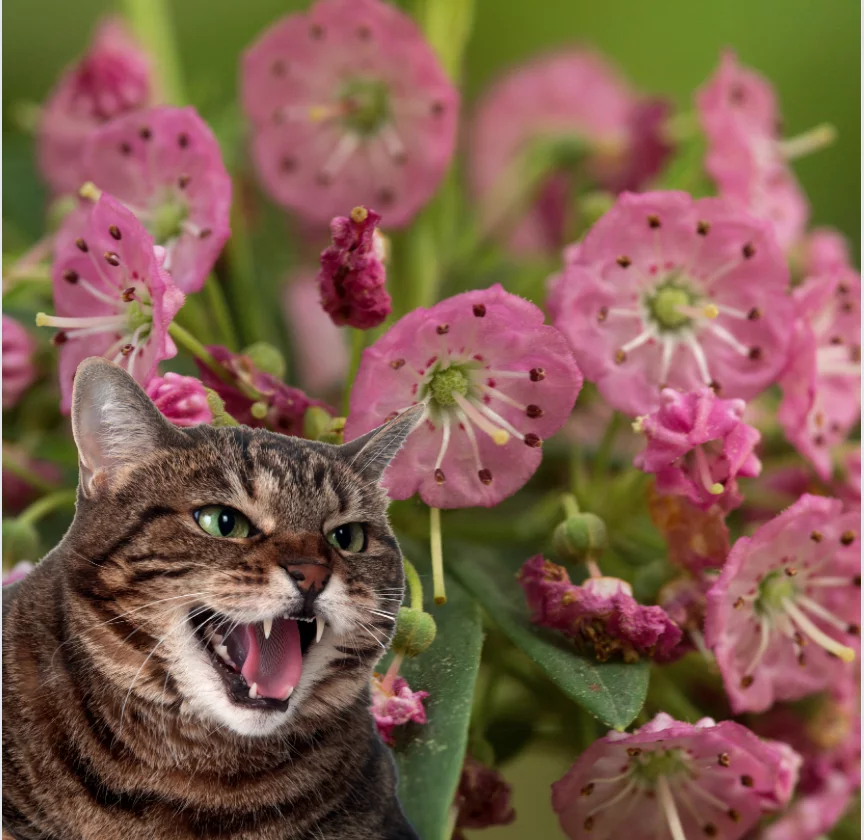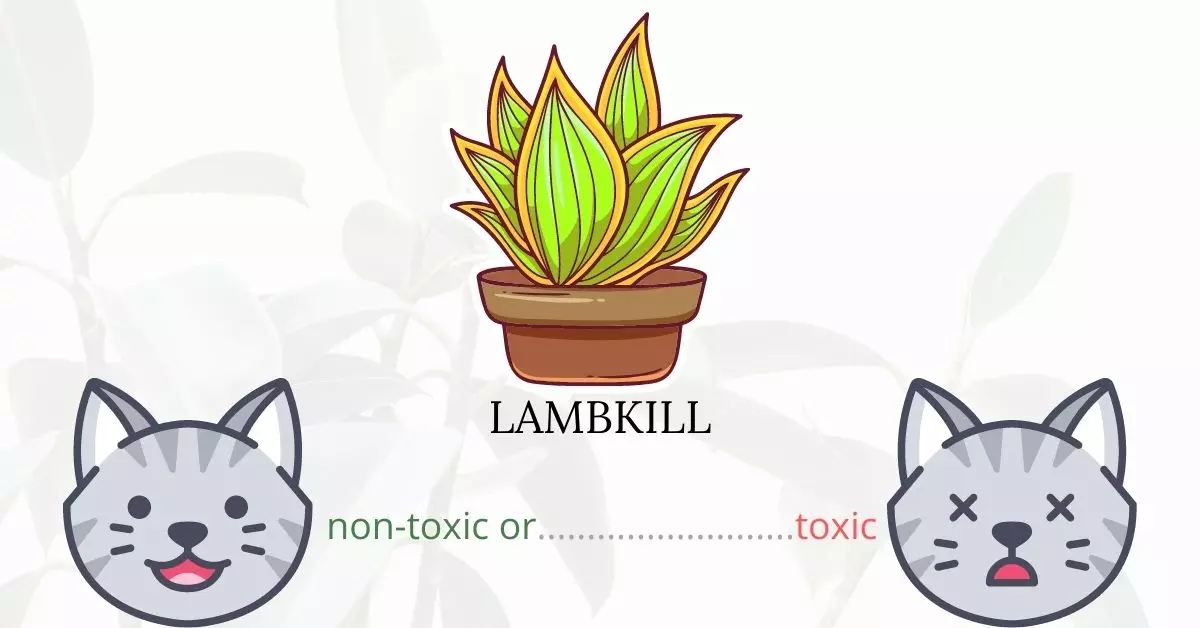Yes, Lambkill or Sheep Laurel is toxic to cats.
This article is a result of collaborative efforts with a team of experienced DVMs (doctors of veterinary medicine). With their expertise, we ensure that the information provided is accurate, up-to-date, and reflective of the potential risks posed by plants like Lambkill to our feline companions. Furthermore, our research extends to high-authority websites such as ASPCA and PetMD to ensure a comprehensive understanding of each plant’s effects on cats.
Lambkill or Sheep Laurel is a flowering plant that contains substances such as arbutin glucoside, grayanotoxins including andromedotoxin, acetylandromedol, rhodotoxin, and asebotoxin. These compounds, especially grayanotoxins, can cause heart and respiratory problems in cats by acting on sodium ion channels and muscarinic receptors. Ingesting any part of this plant can lead to symptoms such as diarrhea, weakness, and cardiac failure in cats. Notably, all parts of the Lambkill plant, especially its foliage, are toxic due to the presence of glycosides. Turpentine, an example of andromedotoxin, has a burning sensation which can deter animals from consuming large amounts. If you suspect that your cat has ingested Lambkill, it is imperative to seek veterinarian care promptly.
Clinical Signs of Lambkill or Sheep Laurel Poisoning in Cats

When cats come into contact with, ingest, or even just smell the Lambkill or Sheep Laurel plant, they can exhibit a range of clinical signs due to the plant’s toxic constituents. Here’s a breakdown of each symptom and the reasons behind their occurrence:
- Dehydration: Caused by diarrhea or excessive salivation, leading to a loss of fluids.
- Diarrhea: A direct result of the gastrointestinal tract being irritated by the toxins.
- Dizziness: Grayanotoxins can affect the cat’s central nervous system, leading to a lack of balance.
- Drowsiness: A reflection of the depressant action of the toxins on the central nervous system.
- Excessive Salivation: A common body response when trying to expel harmful substances, indicating irritation in the mouth or throat.
- Low Blood Pressure: The heart’s response to certain toxins that lead to a decrease in its pumping force.
- Perspiration: Cats generally don’t sweat in the same way humans do, but they can exhibit dampness on their paws and noses as a stress response.
- Vomiting: An immediate gastrointestinal response trying to eliminate the ingested toxins.
- Weakness: Often due to the effects of toxins on muscles and the central nervous system.
- Cardiac Failure: Grayanotoxins can cause disruptions in heart rhythms, leading to cardiac complications.
In more severe cases, the following symptoms can be observed:
- Loss of Coordination: A result of the impact of toxins on the brain and nervous system.
- Severe and Progressive Muscular Weakness: Grayanotoxins and glycosides affect muscle function leading to pronounced weakness.
- Bradycardia: A dangerously slow heart rate caused by the effects of toxins on the heart’s electrical activity.
- Nodal Rhythm or Wolff-Parkinson-White Syndrome: Specific types of heart rhythm disturbances induced by grayanotoxins.
- Coma: A severe depressive state of the central nervous system due to high amounts of toxins.
- Death (in rare cases): If the ingestion is too high and not treated in time, the cumulative effects of all symptoms can unfortunately lead to fatality.
If any of these symptoms are observed, it is essential to consult a veterinarian immediately.
First Aid and Treatment of Lambkill or Sheep Laurel Poisoning in Cats

The veterinarian will typically administer symptomatic and supportive treatment. If necessary, the vet will most likely induce vomiting. On the first day, activated charcoal may be given several times if a substantial amount of the plant has been consumed. Depending on your cat’s condition, respiratory support and fluid replacement therapy may be required. Atropine is frequently prescribed for severe bradycardia, whereas sodium channel blockers or isoproterenol may be used to treat heart block.
Recovery from Lambkill or Sheep Laurel Poisoning in Cats

Grayanotoxins are quickly digested and excreted, thus animals who have just taken a tiny amount will start to feel better within hours, and heart rate and blood pressure will normally return to normal within two to nine hours, with a full recovery expected in 24 hours. The prognosis in extreme cases is uncertain because the animal may improve or become comatose and die.
Prevention of Lambkill or Sheep Laurel Poisoning in Cats
Avoid growing lambkill plants within the vicinity of your home. If these toxic plants exist in your neighborhood, it is better to keep your cat indoors for his or her safety. You can use cat cages or build fences and safety nets around your house to limit your cat’s access outdoors.
If you love plants but have cats at home, check out these lists:





